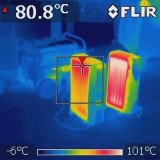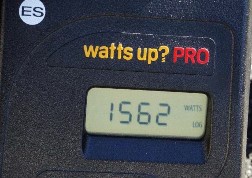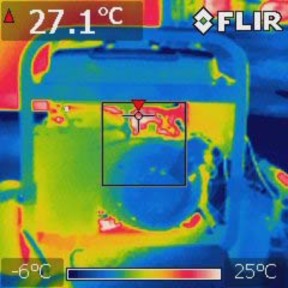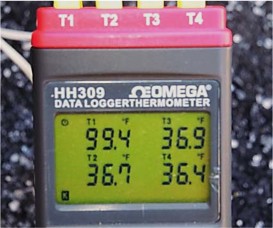Generator Cooling Interference Testing

The test generator was loaded by a 3,000 watt load and operated with and without the GenTent installed to determine if the GenTent might affect generator cooling. Thermocouples were located at alternator and engine air inlet and outlet ports. The thermocouples were connected to an Omega HH309 Data Logger Thermometer to record temperatures while the generator was operating. In addition, a Flir i7 thermal imaging camera was utilized to capture thermal images.
The generator was operated while supplying power to a 3,000 watt load both with and without the GenTent installed, for a period of at least thirty minutes, while temperatures were recorded and thermal images were obtained.
Thermocouples were located at the following ports:
- T1. Engine cooling air port
- T2. Alternator cooling air port at engine end
- T3. Cooling air port on alternator at cover end
- T4. Alternator cooling air underneath cover
Thermocouple location T1 (left) and T2 (right)

Thermocouple location T3 (left) and T4 (right)

Testing Dual Heaters in Operation
The tested 3,000 watt load consisted of two oil-filled space heaters, shown in the thermal image. Each heater was connected to a different generator receptacle to insure a balanced load for the generator, then set to its highest heat setting. Power consumed by the heaters was confirmed with a Watts Up? Pro power analyzer.
Thermal Image of Heaters

Watts Reading for Heater 1

Watts Reading for Heater 2

Thermal Image without GenTent

As illustrated, the GenTent was found to have no appreciable effect on the operating temperatures of the generator. Engine cooling air was slightly higher, but did vary ±3-4 °F operating in either configuration.
Thermal Image with GenTent

Temperatures without GenTent

Temperatures with GenTent

